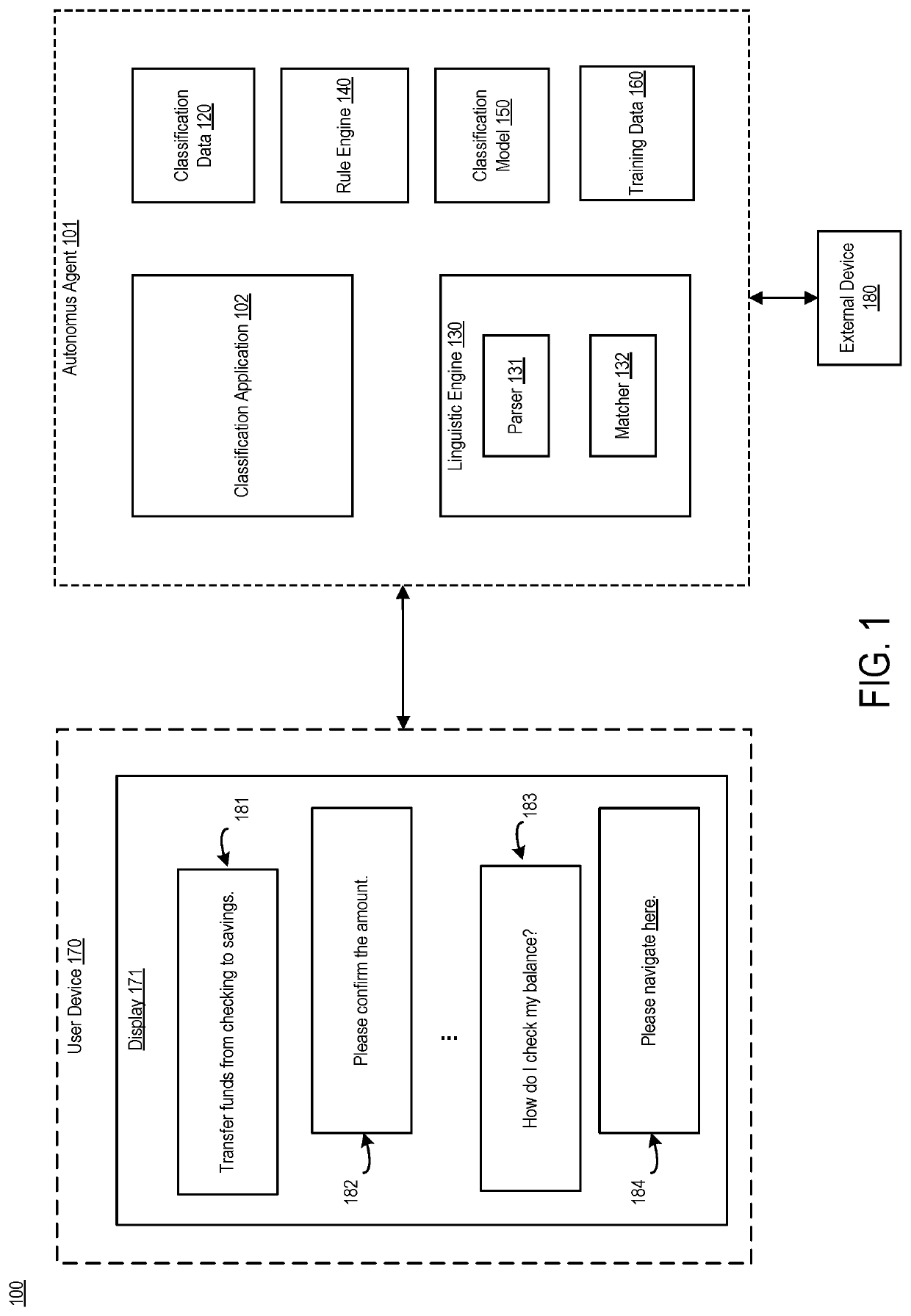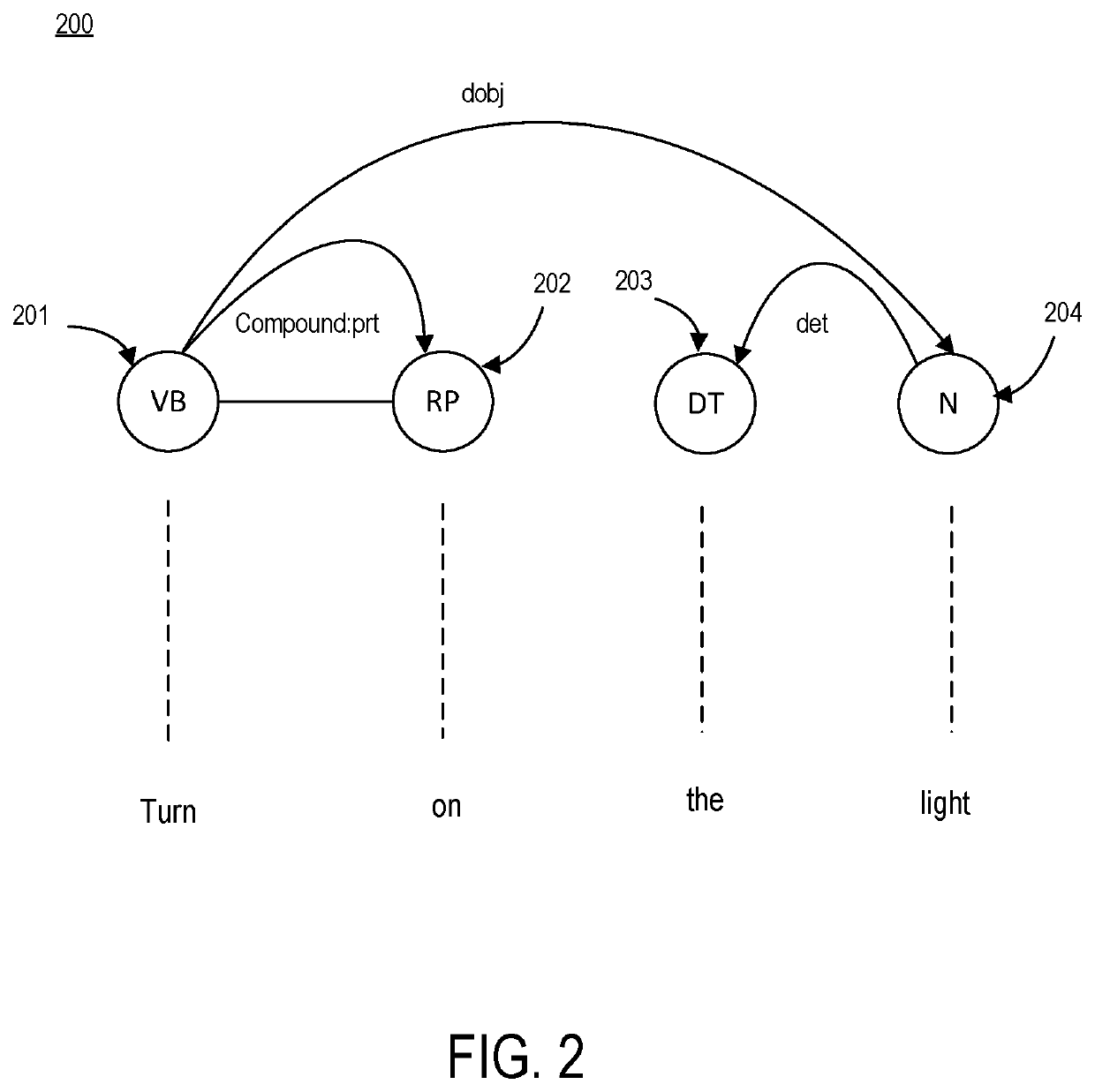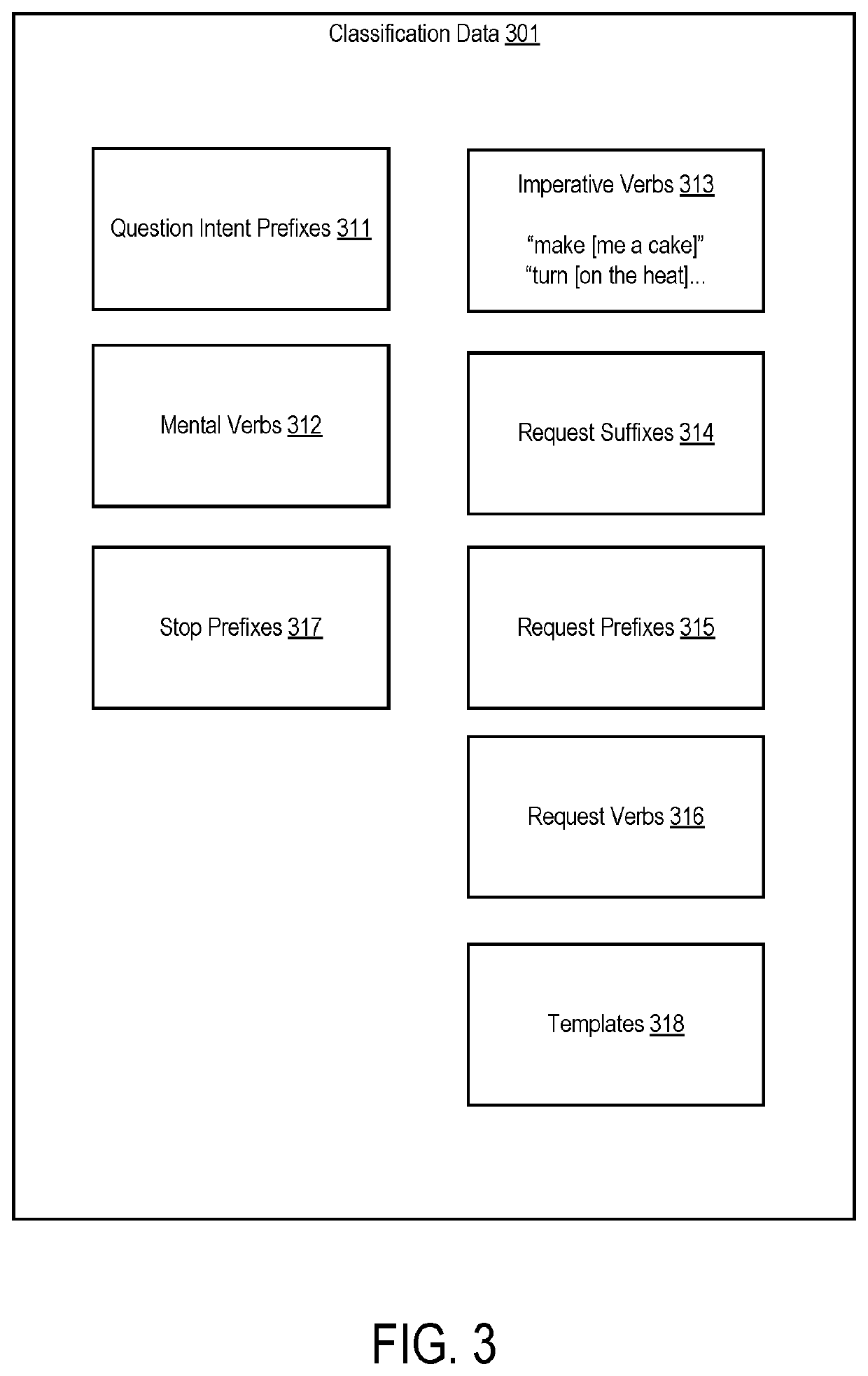Enabling autonomous agents to discriminate between questions and requests
a technology of autonomous agents and questions, applied in the field of enabling, can solve problems such as user frustration, user frustration, and current solutions that cannot distinguish between user utterances that relate to a question and utterances, and achieve the effect of reducing the number of users
- Summary
- Abstract
- Description
- Claims
- Application Information
AI Technical Summary
Benefits of technology
Problems solved by technology
Method used
Image
Examples
example software
Code
[0115]Example code that implements functionality of classification application 102 is shown below.
[0116]
/ / returns null if meaningless utterance, or unable to recognize / / returns true if TRANSACTIONAL, false if QUESTION. / / explanationMap stores public Boolean isARequestUtteranceKeywordBased(String utteranceOrig, MapObject> explanationMap) {String utterance = utteranceOrig.toLowerCase( );Boolean matchedWithTrainingSet =lingRecognizer.matchWithTrainingSet(utteranceOrig);if (matchedWithTrainingSet != null) {explanationMap.put(“ling_match_recognizer”, true);explanationMap.putAll(lingRecognizer.getExplanationMap( ));return matchedWithTrainingSet;}List tokens = TextProcessor.fastTokenize(utterance, false);if (tokens.size( ) explanationMap.put(“analysis is rejected”, “single token utterance”);return null;} / / remove stop − pre − wordif(tokens. get(0).equals(“please”)∥tokens.get(0).equals(“i”)∥tokens.get(0).equals(“we”))tokens.remove(0); / / remove stop-phrasetry {if (tokens.get(0).equals(...
PUM
 Login to View More
Login to View More Abstract
Description
Claims
Application Information
 Login to View More
Login to View More - R&D
- Intellectual Property
- Life Sciences
- Materials
- Tech Scout
- Unparalleled Data Quality
- Higher Quality Content
- 60% Fewer Hallucinations
Browse by: Latest US Patents, China's latest patents, Technical Efficacy Thesaurus, Application Domain, Technology Topic, Popular Technical Reports.
© 2025 PatSnap. All rights reserved.Legal|Privacy policy|Modern Slavery Act Transparency Statement|Sitemap|About US| Contact US: help@patsnap.com



